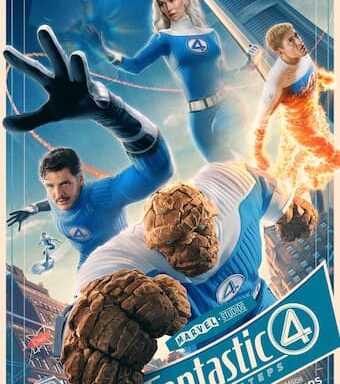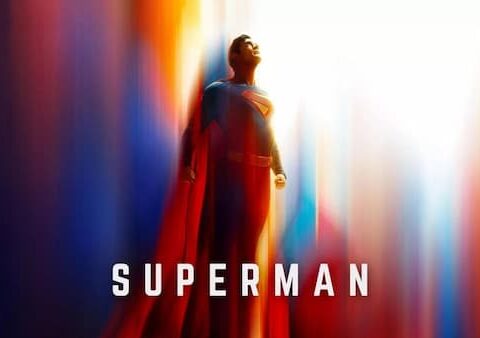Having already covered the first few months of Nick Spencer’s monumental Captain America: Steve Rogers series (see here), this is the wrap-up look across the last stretch of chapters in this series.
This covers the last few chapters of the title prior to the arrival of Secret Empire; and the few chapters that unfolded parallel to that event.
I apologise that this article is shorter and a bit less in-depth than the previous one, due to time constraints: but I was as compelled and impressed by this run of chapters as I had been by the earlier issues.
Captain America: Steve Rogers #11 continues the same quality level as most of the series. The intrigue and the plot twists continue, as does the rewriting of Steve Rogers’ past.
The parallel narrative structure continues to work superbly, with the material split equally between the present and the past. The past, 1930s material still tends to be more interesting than the present-day narrative; but the latter also continues to keep us on our toes.
The focus here is on Cap’s relationship with Zemo, which proves fascinating – and it gets to the core of works so well about this series: we are having to reconsider, reimagine, a mythology we thought we already knew well enough.
Seeing these things play out in the past between Cap and Zemo is terrific – and all of this reworking of history that also rewrites the ‘present’ is a marvelous storytelling device (like a massive, macro version of ‘Mandela Effect’).
Again, this issue also juggles a bunch of other elements too, which is something Spencer is doing very well in this title. So we go to Taskmaster in Bagalia, have little snippets of Carol Danvers and Quasar, and generally continue to have a good sense of MU-wide scope to this storyline.
The ‘Newsreel’ sequence that starts off Captain America: Steve Rogers #12 is a sublime, perfect touch.
It plays perfectly into the Cap mythology and vintage feel; though, of course, it is both the history we’re familiar with and a history we’re not familiar with anymore too, which is what is so effective about this whole concept.
Captain America: Steve Rogers #12 and #13 continue to juggle a number of characters and situations, with newly unemployed Maria Hill encountering Taskmaster in Bagalia (Taskmaster’s complaint about “Neo Cons” is one of the funniest lines I’ve read in a while).
The twists and turns in the plot, remarkably, keep coming – this series really does keep us on our toes, second guessing all the time. The emergence of Elisa Sinclair in the present-day narrative as Madame Hydra is one of the best moments (among the many big moments) in this series.
Captain America: Steve Rogers #14 is another heavy hitter, centering chiefly on the enigmatic relationship between Rogers’ and Elisa Sinclair that has been beautifully established from the very beginning of this series.
We divide our attention between Rogers and Elisa in the 1930s – as their relationship seemingly comes to a head – and the machinations of Elisa in the ‘present’ as Madame Hydra.
Again, as with the Zemo material, this split narrative – focusing on one character or relationship but in two different eras – works superbly, with each enhancing the other.

The Rogers/Elisa confrontation in the past is thoroughly engaging, flowing from so much of the best earlier material in this title. It culminates with her introducing him to the rising menace of the Red Skull, which is a suitably dramatic ending.
Meanwhile, Elisa’s work in the present, though less interesting, is nevertheless entertaining to read. Here, specifically, we see her – looking terrific in her Madame Hydra guise – travelling around and gathering rogues to establish the “New High Council” of Hydra. This allows us, among other things, to bring Arnim Zola more firmly to the story.
Elisa in general has been a fascinating character in this series – possibly the most interesting of all.
And here, we see her story really developing. Again, the storytelling and plot pacing is fantastic, and much credit has to be given to Spencer’s ability to juggle multiple elements and characters in every issue and have them all intertwine intriguingly.
Captain America: Steve Rogers #15 is another knockout – a highlight of the run. Gabrielle Del’Otto’s cover art is stunning in its textured realism. The story within more than lives up to that striking cover, as Cap’s game against the Red Skull comes to fruition.
This whole dynamic of Rogers being entirely wise to Schmidt’s manipulations and being the one playing Schmidt (instead of the other way around, as Schmidt thinks) has been delicious.

Captain America: Steve Rogers #16 sustains both the quality level and the bubbling intrigue. The juxtaposition between Elisa and Steve in the past and Elisa (Madame Hydra) and Steve in the present works beautifully here, as a fascinating narrative unfolds here in two different time periods.
There are other interesting elements scattered about, particularly Zemo’s revelling in his retribution against Bucky.
As the last chapter before we launch fully into Secret Empire, this issue draws every thread to its long-intended final pattern terrifically.
It feels truly climactic, building to the big official reveal (to everyone else in the MU) of Captain America as Hydra, as the carefully planned coup is executed.
By Captain America: Steve Rogers #17, we’re officially into Secret Empire territory. Where, previously, everything we’ve been reading was about the long-playing Hydra conspiracy to seize power, we’re now into Hydra’s rule.
There is an obvious Age of Apocalypse style grimness to how this is depicted. Straight away here, we’re dealing with Hydra’s excessive, totalitarian actions in Vegas, as well as concentration camps for Inhumans.
What’s really interesting here is the sense we’re getting of how Hydra is operating once in control of government. It’s not just about maintaining control through fear and iron-fist rule, but about how important the propaganda campaign is and also a sense of all the deal-making and arrangements that have to me made to keep the situation tenable.
There’s lot of interesting elements to chew on here. Rogers’ deal with Magneto is one of them; the sense of how the Mutants have to be dealt with and factored into the Hydra equation. Magneto’s response is interesting too. It’s a credit to the writing that it was remembered to factor Magneto into this equation, being such an important player.

Rogers’ handing Magneto the severed head of Red Skull as a gift is particularly grim – highly reminiscent of the Egyptians handing Caesar the head of Pompey in Alexandria during the Roman Civil War.
Having this book framed in the idea of Rogers being interviewed by the news reporter is also really clever and effective. It allows us to get a sense of what’s going on in Rogers’ head at this extraordinary juncture in his affairs, how he sees the situation and how he justifies his position. His reference to the ‘Great Illusion’ is particularly fascinating – the idea that all of history after World War II is a fake reality that has been pulled over the eyes of the world to disguise Hydra’s rightful place or victory.
This plays, again, very much into the necessity of a massive propaganda programme that is needed to sustain a fascist regime. They literally need to rewrite history and reframe reality in order to legitimise their position.
Of course, here it also has a different meaning – because of the literal reality-changing properties of Kobik. But, even as a metaphor, it works very well.
There’s also a sense here, as there has been all along, of this whole storyline being contrived to play in to current, real-world events in America.
The idea of ‘fake news’ is evident here and of conflict or tension between the ruling administration and the media in the battle for minds and perception.
How this book concludes – with the journalist being dragged off by security for daring to ask the wrong question – plays directly in to these contemporary fears about how bad the relationship between governing administration and journalists can potentially get.
What’s certainly evident here is the extent to which Rogers and the Hydra regime knows it has to control information and public perception. That *it’s* contrived narrative – it’s version of reality – has to be maintained in order for public support for the regime to continue.
Captain America: Steve Rogers #17 is another terrific installment in this saga.
Captain America: Steve Rogers #18 is less interesting, but only marginally. What this issue does is to take the Rogers/Hydra situation more global in its context rather than being just centered in America.
Rogers’ address to the United Nations is particularly grim and fascist-like, portraying a situation where an American dictator is basically steam-rolling over the representatives of the rest of the world, appearing to regard them all as low, insignificant parties.
The highlight of this state of affairs is Rogers’ spats with, first T’Challa and Wakanda, and then Namor. Having these two international heavyweights and figureheads in the MU play into this Secret Empire pardigm is very interesting – and probably necessary at this stage.
It’s good to see T’Challa show no deference at all to Rogers or Hydra and essentially get one over on him in the UN chamber. Namor doesn’t fare so well; but it’s good to contemplate the situation Namor finds himself in and to view the new paradigm through his particular lens.
You can never really go wrong with T’Challa and Namor – so this chapter keeps the interest levels high, even if it’s less absorbing as previous issues.
Captain America: Steve Rogers #19 is comparatively short on plot – with most of the plot now being carried in the Secret Empire title.
Instead we get a more introspective, personal narrative centering on Steve’s relationships with Elisa on one hand and Sharon Carter on the other. This manages to be engaging in its own right. It isn’t entirely necessary reading; but, at this stage, any further insight into Steve’s state of mind is a useful companion to the bigger events going on in the main story.
By this point, with Secret Empire itself carrying the weight of the main story, the Captain America: Steve Rogers title has its best days behind it.
Which is fine – because they were pretty damn great days. What Nick Spencer and co have managed to do for the bulk of this title has been astonishingly good. The mastery of intricate plotting, interweaving threads, evolving intrigue and twists and turns has been something special to behold.
All the way through this series, it has been compelling. The only other example (certainly in recent-ish memory) I can think of a writer taking such a long, measured build-up to a major ‘event’ was Johnathan Hickman’s sublime run on the Avengers’ books that led into the 2015 Secret Wars.
But, although I hold Hickman’s work on that mammoth run in the highest esteem, those stories didn’t have quite this level of controversy, subversiveness, or quite this many twists and turns in the scheming and plotting. For this level of intrigue, uncertainty and plots-within-plots narrative to sustain their potency for this long is a massive credit to Spencer’s planning and vision.
Irrespective of what you might think of Secret Empire itself, the months of lead-in material here in the pages of Captain America: Steve Rogers have been superb.
Secret Empire itself can never live up to all the lead-in.
But I suspect that, years from now, we’ll be looking back at Spencer’s work on Captain America: Steve Rogers as a massive landmark in Marvel Comics, big-scale comic-book storytelling, and the mythology of Captain America.




